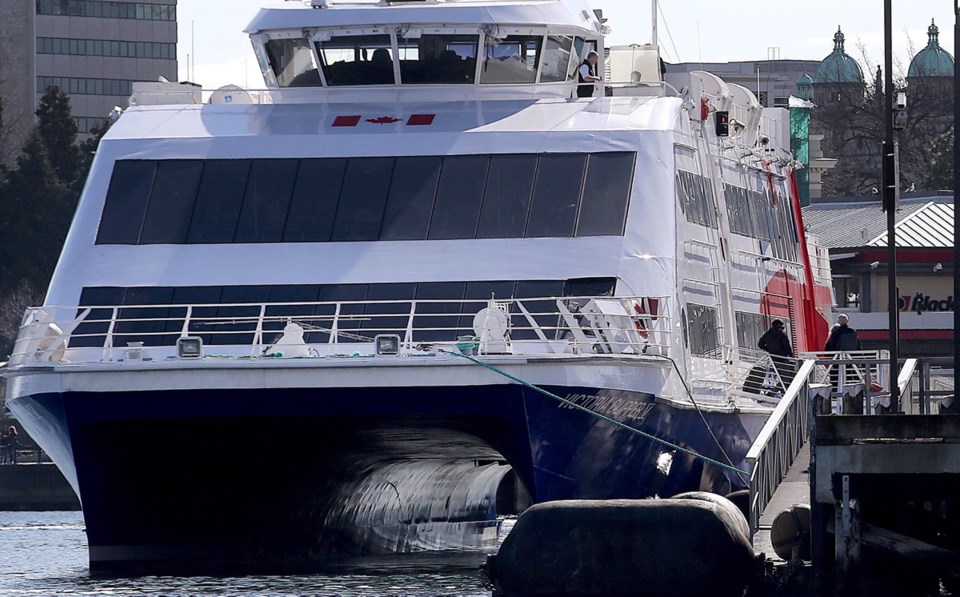A year after introducing a new vessel to its Victoria-Seattle route, Clipper Vacations is rejoicing over how few sailings the Clipper V passenger ferry has made between the two ports.
While many transportation companies would be shrinking away from smaller numbers, Clipper, which has been running a ferry service on the route since 1986, is thrilled it made 232 fewer sailings in 2018.
“We are so pleased with what’s happened in the last year,” said Clipper chief executive Dave Gudgel. “This is the right boat for this route. It’s pretty amazing how it has fit in and has been accepted. It’s been a huge improvement.”
The improvement stems from the fact that Clipper Vacations made fewer trips while carrying the same number of passengers. Gudgel said that means less traffic on the Salish Sea, a reduced environmental footprint and lower costs.
Clipper typically carries 235,000 people on the route each year, and Gudgel said last year’s numbers were right around that mark.
The difference is the vessel.
On March 9 last year, Clipper Vacations put into service the Clipper V, a 579-seat catamaran that had been working in the North Sea between Hamburg and Heligoland in Germany, as part of the fleet owned by its parent company, Förde Reederei Seetouristik.
The 52-metre vessel became the fastest in Clipper’s fleet, travelling up to 36 knots. It was also the largest, replacing the original vessel, the 330-seat Clipper I that kicked off the Victoria-to-Seattle service. Clipper V is 12 metres longer and 2.5 metres wider than Clipper I, and it came with a motion-dampening system and wave-piercing bows that allowed it to operate in weather that would otherwise have forced cancellation of sailings.
Because of the vessel, the company only had three cancelled sailings last year. In a typical year, it could see as many as 25 trips cancelled due to weather.
“The difference is a lot of days there are four- to six-feet seas, and at six feet [the older vessels], which were rated for higher waves, could handle it, but often the passengers [couldn’t],” said Gudgel. “With [Clipper V] in six-foot seas it’s just another day.”
Now that it’s been in service for a year, Gudgel said the company can see what the future holds on the route.
“Right now the loads wouldn’t justify [a second large vessel], but any time we think about doing something more in this area it will be a vessel this size or greater,” he said. “Now that we are part of a larger family of companies there are several other larger vessels in the fleet that could potentially find their way to this market.”
Currently, Clipper can’t operate the Clipper V at capacity. Because of the limited size of the border clearing station in Victoria, the Clipper V caps its load at 475 people on days it has one trip, and 440 on days with two trips between the cities.
“Our terminal is our limiting factor,” said Gudgel, noting the reduced load gives U.S. Customs the ability to process travellers.
Plans for a pre-clearance facility to be shared with Black Ball, which operates the Coho car ferry between Victoria and Port Angeles, have long been debated.
Gudgel said all stakeholders have been meeting to come up with a workable solution, but he said it’s a difficult site, further complicated by the required functions of the facility and the cost. A new facility has been rumoured to cost between $100 million and $200 million.
Ryan Burles, president of Black Ball, said all of the interested parties, including the federal and provincial governments, appear to be committed to a new facility. “We want to make this work, but it has to fit into our business plan,” he said.



